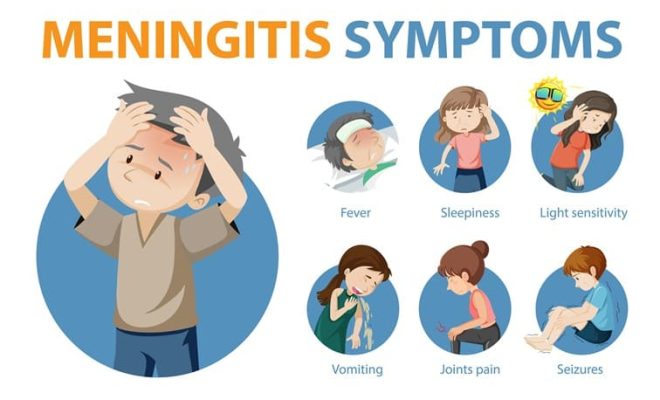How to Diagnose Meningitis: 11 Steps

Intro:
Meningitis is a severe illness that affects the membranes surrounding the brain and spinal cord. Identifying it early is crucial for ensuring proper treatment and the best possible outcome. Follow these 11 steps to diagnose meningitis.
1. Know the symptoms:
Common symptoms of meningitis include sudden fever, headache, stiff neck, sensitivity to light, nausea or vomiting, confusion, fatigue, and rash. Symptoms may occur singly or in combination.
2. Be aware of risk factors:
Understanding the risk factors for meningitis can help with early diagnosis. Risk factors include age (infants and young children are at higher risk), a weak immune system, working in close quarters (e.g., college dormitories), and exposure to meningitis-causing bacteria.
3. Check for a stiff neck:
A key sign of meningitis is neck stiffness, particularly when trying to touch your chin to your chest. Difficulty in performing this action could indicate meningitis.
4. Examine any rashes:
A purplish-red rash called petechiae may be present in people with meningococcal meningitis – one of its more severe types. Press a transparent glass against the rash; if it doesn’t fade under pressure, seek medical attention immediately.
5. Check for sensitivity to light:
Photophobia or increased sensitivity to light is another common symptom of meningitis. Ask the affected person if they are experiencing discomfort due to bright lights.
6. Assess mental state:
Meningitis can cause confusion, drowsiness, or even seizures in severe cases. Check whether the person experiencing symptoms can answer simple questions and is fully alert.
7. Seek professional help:
If you suspect someone has meningitis based on symptoms or risk factors, seek immediate medical attention from a healthcare professional who can evaluate their condition accurately.
8. Undergo diagnostic tests:
To diagnose meningitis, doctors may recommend lumbar puncture (spinal tap), blood tests, or imaging tests like CT or MRI scans. These tests can accurately detect the presence of meningitis-causing pathogens in the body.
9. Identify the causative agent:
Meningitis can be caused by bacteria, viruses, fungi, or parasites. Identifying the causative agent is essential for proper treatment and management of the condition. A lumbar puncture and blood tests can detect the presence of specific pathogens.
10. Begin appropriate treatment:
Based on the type of meningitis diagnosed, treatment usually includes antibiotics (for bacterial meningitis), antiviral medications (for viral meningitis), or antifungal medications (for fungal meningitis). Early intervention greatly improves recovery chances.
11. Follow doctor’s instructions:
After a meningitis diagnosis, it’s crucial to follow your healthcare provider’s advice on medication, rest, and follow-up appointments to monitor your recovery process carefully.
Conclusion:
Diagnosing meningitis early is vital for effective treatment and minimizing complications. By familiarizing yourself with symptoms and risk factors, promptly consulting a healthcare professional if you suspect meningitis, and following prescribed treatments, you can significantly enhance recovery prospects for yourself or loved ones affected by this serious illness.

